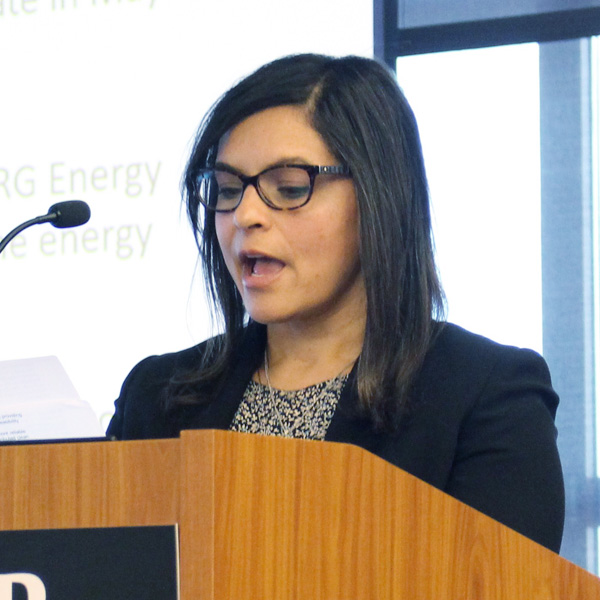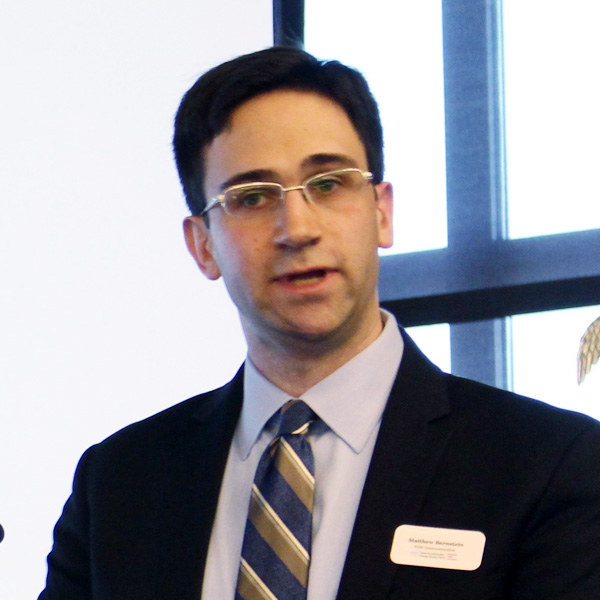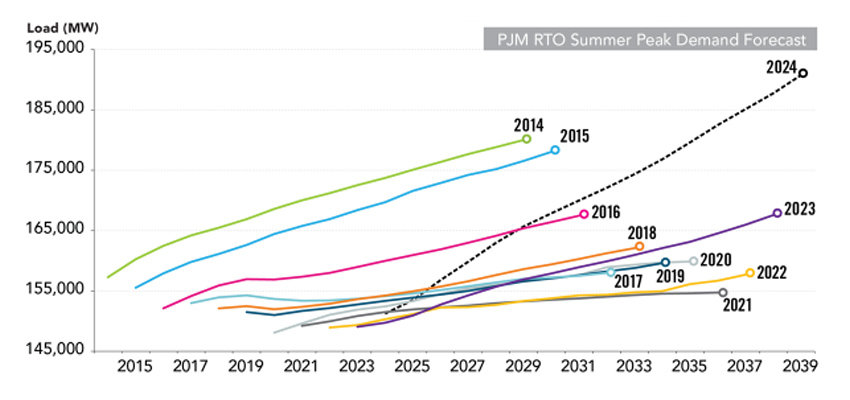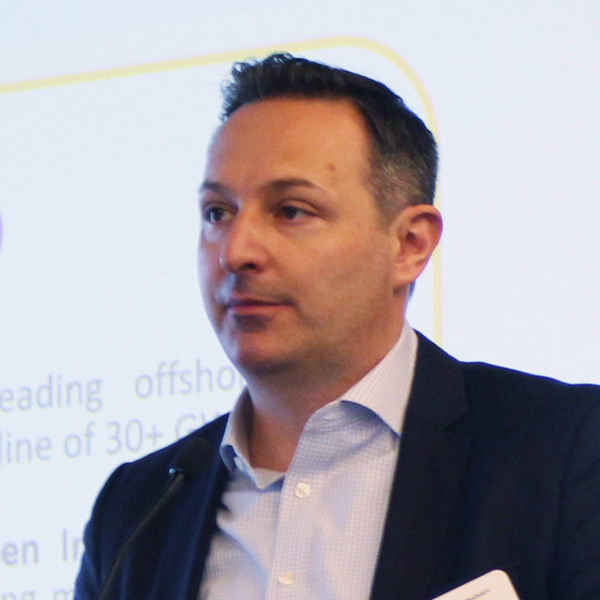In a recent report, a nuclear power expert from George Washington University strongly criticized proponents of nuclear power for presenting what she considered an overly rosy picture of the technology’s potential to meet the world’s energy needs while ignoring its many reliability and security challenges.
The author of “New Nuclear Energy: Assessing the National Security Risks,” Sharon Squassoni, is a research professor of international affairs at GWU whose work focuses on reducing risks from nuclear energy and weapons. In a webinar last month, Squassoni said her goal in writing the report was to explore “what risks might arise given the goals of tripling nuclear energy and deploying small modular reactors to do many things in many places.”
With increasing awareness of the climate effects of burning fossil fuels, some energy experts have touted nuclear energy as a proven technology for meeting baseload energy needs without emitting carbon dioxide and other pollutants. SMRs have emerged as the centerpiece of “an effort to make nuclear energy more affordable, safe and flexible, and thus more attractive to a broader range of uses and users,” the report said.
However, the document pointed out that despite much effort from the nuclear industry and governments “to make nuclear energy relevant again after decades of stagnation,” the actual presence of SMRs on grids “is largely fictional.”
While nuclear boosters have held out visions of cheaply built, moveable reactors powering individual towns and military installations while providing numerous other services, Squassoni said there are currently only two operating facilities that actually merit the SMR label. These reactors — China’s HTR-PM plant, in operation since December 2023, and Russia’s “floating nuclear power plant” Akademik Lomonosov, launched in 2010 — solve few of traditional nuclear plants’ problems and may create new ones, according to the report.
The HTR-PM uses two reactors with a capacity of 100 MWe each, using a “pebble-bed” design incorporating spherical balls of uranium enriched to 8.5% U-235 (compared to the 3 to 5% enrichment typically used in commercial U.S. reactors). It was launched in 2001, based on an existing test reactor, with on-site construction beginning in 2012.
The report noted that the higher enrichment of the reactor’s fuel could make it more attractive for use in a nuclear weapon, while the fuel fabrication, storage of spent fuel and reprocessing “will be more challenging to monitor” than in current reactors. In addition, safeguarding the reactor could be more challenging because it uses on-line refueling, a more complicated process than shutting down the reactor first, and because the spent fuel is stored on site.
Akademik Lomonosov comprises two reactors with a capacity of 35 MWe each and was intended to replace a retired nuclear plant and coal plant in the Chukotka region of eastern Russia. The report noted that placing nuclear plants on a barge does solve the issues of “scarce land for nuclear power plants that require large emergency planning zones,” but the design is far from flawless. Planners must consider the risks of shipping collisions and tsunamis, along with the potential environmental damage of fuel and waste leaks.
Floating plants are also “open to attack either from the surface of the sea or beneath it,” the report said. Pirates and terrorist groups could infiltrate the facilities to steal radioactive material or threaten to damage the plants for financial or political gain.
Additionally, the report warned that “SMRs are unlikely to be built in quantities that will revolutionize nuclear energy” because focusing on large amounts of small reactors means giving up the economies of scale that come with building a single large, centralized plant. The report cited analysis from Princeton University suggesting “700 [small] plants would need to be produced” to outweigh the benefits of large plants, noting that “this is roughly the total number of commercial nuclear … reactors ever built.”
Side Benefits Slow to Emerge
SMR supporters have also proposed that small reactors could provide additional benefits besides electricity, such as residential and industrial heating, desalination, and hydrogen production. The report said that these uses are “neither new nor unique to nuclear energy,” and Squassoni suggested that they would likely not be mentioned if alternatives to nuclear generation for electricity had not recently become available.
“In the past, maybe 10 to 15 years ago, the nuclear power narrative was that nuclear was the only low-carbon baseload generation,” Squassoni said during the webinar. “But what’s happened in the interim is that [renewable energy sources] have captured such a huge part of the market for electricity generation that nuclear now has to tout its ability to multitask.”
This multitasking ability has been touted by the U.S. Department of Energy, and the Electric Power Research Institute floated its NuIDEA plan last year that would see multiple microreactors operate at airports, college campuses, hospitals and other facilities to provide a range of services. But the GWU report said efforts to realize these ambitions will “likely be an uphill climb,” noting that in the U.S., only the Diablo Canyon reactor in California has provided desalination, and none has ever provided district heating.
“Although there are more than 660 district energy systems operating in the United States, few present the right economics for large nuclear cogeneration plants,” the report said. “Smaller plants sprinkled among population centers might overcome the costs of heat transportation, but technical issues like the availability of large dual-purpose turbines to produce electricity and extract steam at suitable temperatures and pressures may continue to persist.”
Military Risks Growing
Finally, the report warned about the possibility for SMRs to become military targets.
Russian forces have occupied both the Chernobyl and Zaporizhzhia power plants at different times since they invaded in 2022 and remain in control of Zaporizhzhia as of early May. The head of the International Atomic Energy Agency (IAEA) recently said that Russia’s “reckless attacks” have brought the danger of nuclear mishaps “dangerously close.” Such an event would have devastating consequences not only for grid reliability but also for the local environment.
“Cooperation among key states essential to minimize the safety, security and proliferation risks of nuclear energy is at an all-time low,” the report said. “The call to triple nuclear energy coincides with the disintegration of cooperation, the unraveling of norms and the loss of credibility of international institutions that are crucial to the safe and secure operation of nuclear power.”
The report called for the U.S., Russia and China to resume their cooperation in nuclear nonproliferation rather than allowing the current environment to spiral into “great power competition.”
“The United States still wields considerable influence in international fora associated with nuclear energy, nonproliferation and nuclear security, and it should use this influence to ensure that any expansion of nuclear energy does not exacerbate national security risks,” the report said. “But first, it will need to get its own policy house in order.”
Pushback from Nuclear Community
Several nuclear experts who spoke to RTO Insider criticized the report, saying it overstated the risks of SMRs without considering the efforts of the international community to address them.
Madeline Lockhart, a doctoral fellow in nuclear engineering at North Carolina State University, acknowledged that growing the nuclear fleet “will naturally lead to an increase in the associated nuclear security risks.” But she argued that the report’s characterization of these dangers is “not well defined,” and that policies should address the risks connected to “specific capabilities, facilities, designs, locations and countries” rather than taking an overly broad view.
“Government organizations, National Laboratories and stakeholders are actively engaged with reactor vendors and buyers to address and minimize national security risks before any reactor will be connected to the grid. Often, robust and complex regulations and guidelines contribute to the extended timelines for reactor deployment — but the goal is always the deployment of safe and reliable energy production,” Lockhart said. “While the national security risks must be addressed, the risk associated with the failure to meet a growing global demand for electricity will be devastating.”
Mehdi Sarram, who served as safeguards director of the Atomic Energy Organization of Iran from 1974 to 1979 and later served in DOE and the IAEA, called the report “biased toward a negative view of nuclear energy.” He disputed Squassoni’s claim about the vulnerability of Chernobyl and Zaporizhzhia, saying that the IAEA “has worked with Russia to avoid a possible attack on Ukrainian nuclear plants.”
The report also discounts the boost that technological advances bring to nonproliferation work, according to Angela Di Fulvio, associate professor of nuclear, plasma and radiological engineering at the University of Illinois Urbana-Champaign. Di Fulvio noted that advances in radiation detection systems and other technologies helped the IAEA track the development of China’s nuclear weapons capabilities.
With regard to SMRs, Di Fulvio admitted that deploying such resources may require “a paradigm shift in material accountancy” and close collaboration between designers and the IAEA to develop proper safeguards against diversion of nuclear material, particularly in regions of political instability. But she insisted that these risks “can be mitigated effectively” and should not prevent the deployment of needed energy resources.
Paul Dickman, chair of the American Nuclear Society’s External Affairs Committee and formerly with DOE’s National Nuclear Security Administration, focused on the challenge of building large fleets of SMRs, noting that the U.S. lacks manufacturing capacity to produce reactor components on a large scale. He said that rather than looking to SMRs to replace large plants as baseload energy suppliers, they should be used to “fill in gaps where grids are small or to replace smaller coal and oil-based generating stations.”




